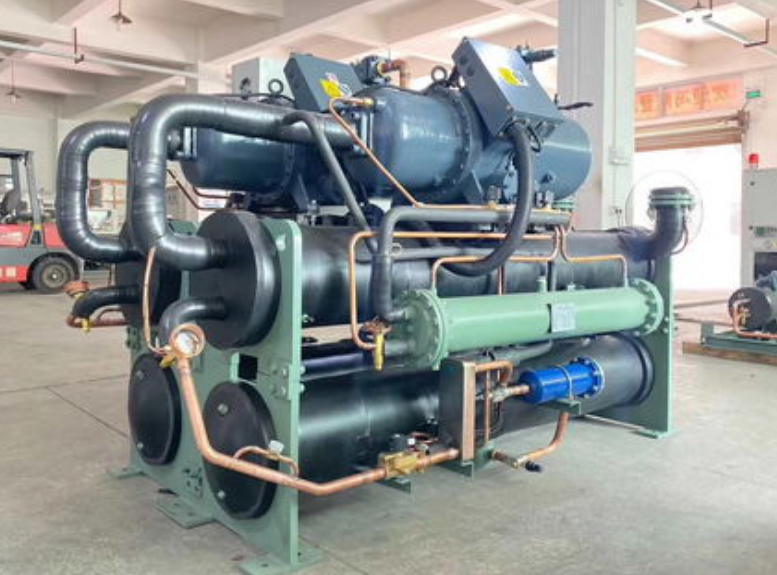General refrigeration principle The function of the compressor is to compress the steam with a lower pressure into a steam with a higher pressure, so that the volume of the steam is reduced and the pressure is increased. The compressor sucks in the lower pressure working medium vapor from the evaporator, raises the pressure and then sends it to the condenser, where it condenses into a liquid with a higher pressure, and after being throttled by the throttle valve, it becomes a liquid with a higher pressure. After the low liquid is sent to the evaporator, it absorbs heat and evaporates in the evaporator to become steam with a lower pressure, and then sends it to the inlet of the compressor to complete the refrigeration cycle.
The refrigeration system consists of refrigerant and four major parts, namely compressor, condenser, expansion valve, and evaporator.
compressor
The compressor is the driving force of the refrigeration cycle. It is driven by the motor and rotates continuously. In addition to extracting the vapor in the evaporator in time to maintain low temperature and low pressure, it also increases the pressure and temperature of the refrigerant vapor through compression, creating the refrigerant vapor. The conditions under which the heat of the vapor is transferred to the external ambient medium. That is, the low temperature and low pressure refrigerant vapor is compressed to a high temperature and high pressure state, so that the refrigerant vapor can be condensed by using normal temperature air or water as the cooling medium.
condenser
The condenser is a heat exchange device. Its function is to use the ambient cooling medium (air or water) to take away the heat of the high-temperature and high-pressure refrigeration vapor from the compressor, so that the high-temperature and high-pressure refrigerant vapor is cooled and condensed into a high-pressure and normal-temperature refrigerant liquid. . It is worth mentioning that in the process of changing the refrigerant vapor into the refrigerant liquid in the condenser, the pressure remains unchanged and remains high pressure.
Throttle element
The high-pressure and normal-temperature refrigerant liquid cannot be directly sent to the low-temperature evaporator. According to the corresponding principle of saturation pressure and saturation temperature, the pressure of the refrigerant liquid is reduced, thereby reducing the temperature of the refrigerant liquid. The high-pressure and normal-temperature refrigerant liquid is passed through the pressure-reducing device-throttle element to obtain low-temperature and low-pressure refrigerant, which is then sent to the evaporator to absorb heat and evaporate. Capillary tubes are often used as throttling elements in refrigerators and air conditioners in daily life.
Evaporator
The evaporator is also a heat exchange device. The throttling low-temperature and low-pressure refrigerant liquid evaporates (boiling) into steam in it, absorbs the heat of the cooled material, reduces the temperature of the material, and achieves the purpose of freezing and refrigerating food. In the air conditioner, the surrounding air is cooled to achieve the effect of cooling and dehumidifying the air. The lower the evaporation temperature of the refrigerant in the evaporator, the lower the temperature of the object to be cooled. In the refrigerator, the evaporation temperature of the general refrigerant is adjusted at -26℃~-20℃, and in the air conditioner, it is adjusted at 5℃~8℃.
